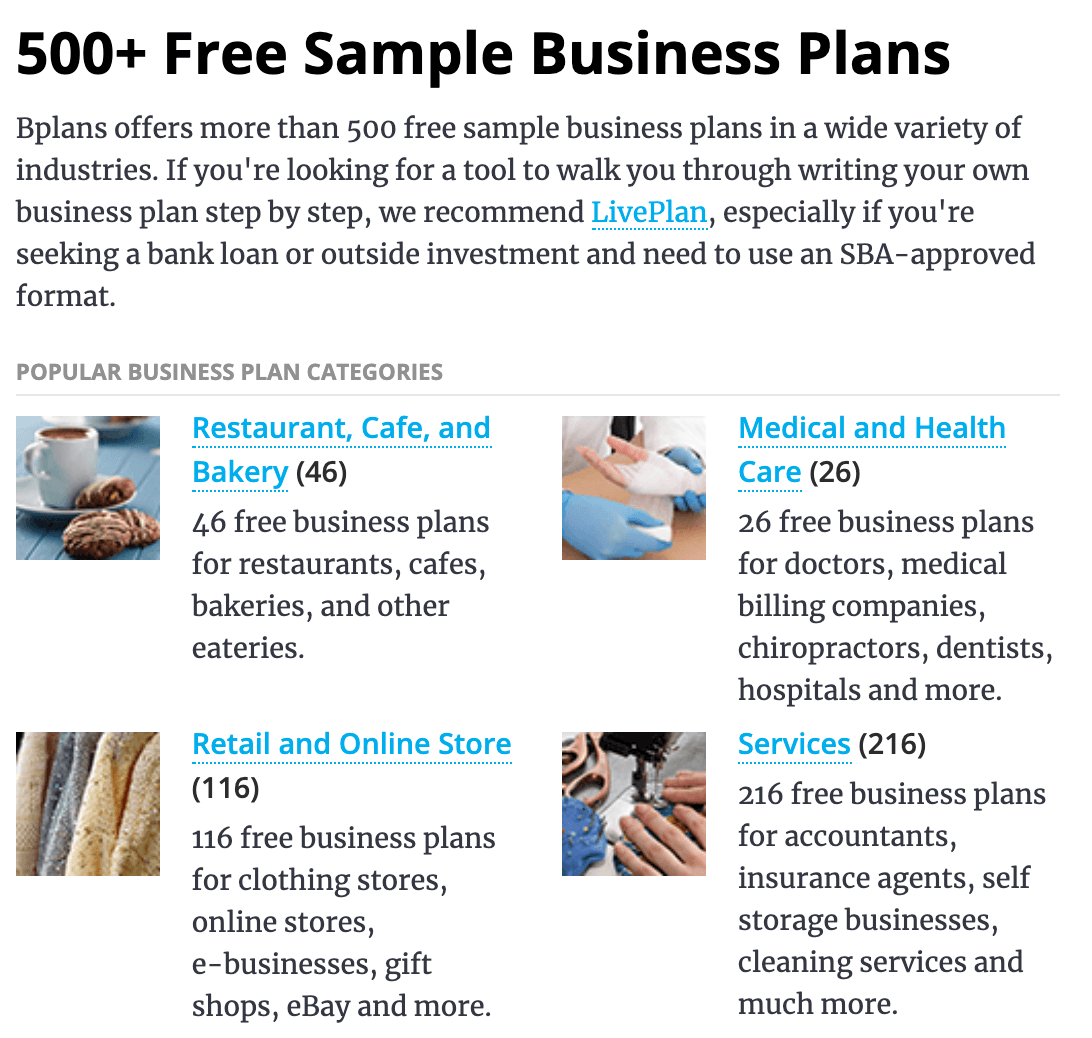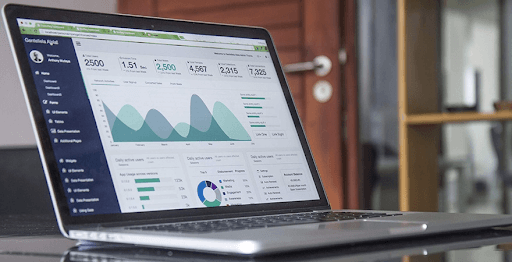Are you starting a new business or trying to get a loan for your existing venture? If so, you’re going to need to know how to write a business plan. Business plans give entrepreneurs the opportunity to formally analyze and define every aspect of their business idea.
In this post, you’ll learn how to put together a business plan and find the best resources to help you along the way.
What is a Business Plan?
A business plan is a formal document that outlines your business’s goals and how you will achieve those goals. Entrepreneurs who start out with business plans are 16 percent more likely to build successful companies, according to the Harvard Business Review. Developing a business plan ensures sustainable success, guiding you as you grow your business, legitimizing your venture, and helping you secure funding (among countless other benefits).
What Are the Main Purposes of a Business Plan?
Most financial institutions and service providers require you to submit a detailed business plan to obtain funding for your business. Online businesses will likely have a low overhead to start, so they may not need funding and therefore may not feel the need to write a business plan. That said, writing a business plan is still a good idea as it can help you secure a drastic increase limit on your credit card as your business grows or open a business account. This varies per bank.
If you’re growing your business, use it to help you raise expansion capital, create a growth strategy, find opportunities, and mitigate risks.Palo Alto software found that companies who make business plans are twice as likely to secure funding. .
If you’re just starting your business, making a business plan can help you identify your strengths and weaknesses, communicate your vision to others, and develop accurate forecasts.

How to Make a Business Plan: The Prerequisites
Here are the prerequisites to creating a solid business plan:
- Establish goals
- Research
- Understand your audience
- Determine your business plan format
- Get to writing!
Establish Goals
There are two key questions to ask here:
- What are you hoping to accomplish with your business?
- What are you hoping to accomplish with your business plan?
Approaching your business plan through that lens will help you focus on the end goal throughout the writing process. These also provide metrics to measure success against.
Research
Before writing your business plan, gather the content and data needed to inform what goes in it. This includes researching your market and industry – spanning everything from customer research to legalities you’ll need to consider. It’s a lot easier to start with the information already in front of you instead of researching each section individually as you go.
Turn to guides, samples, and small business plan templates to help. Many countries have an official administration or service dedicated to providing information, resources, and tools to help entrepreneurs and store owners plan, launch, manage, and grow their businesses.
The following will take you to online business plan guides and templates for specific countries.
- United States Small Business Administration (SBA) – The “write your business plan page” includes traditional and lean startup business plan formats, three downloadable sample business plans, a template, and a step-by-step build a business plan tool.
- Australian Government – The “business plan template” page includes a downloadable template, guide, and business plan creation app.
- UK Government Business and Self-Employed – The “write a business plan” page includes links to a downloadable business plan template and resources from trusted UK businesses. .
- Canada Business Network – The “writing your business plan” page includes a detailed guide to writing your business plan and links to business plan templates from Canadian business development organizations and banks.
These business resource sites also offer a wealth of valuable information for entrepreneurs including local and regional regulations, structuring, tax obligations, funding programs, market research data, and much more. Visit the sites above or do the following Google searches to find official local business resources in your area:
- your country government business services
- your state/province government business services
- your city government business services
Some Chamber of Commerce websites offer resources for business owners, including business plan guides and templates. Check your local chapter to see if they have any.
Banks that offer business funding also often have a resource section for entrepreneurs. Do a Google search to find banks that offer business funding as well as business plan advice to see the business plans that get funding. If your bank doesn’t offer any advice, search for the largest banks in your area:
- business plan guide bank name
- business plan samples bank name
- business plan template bank name
If you’re looking for more sample business plans, Bplans has over 500 free business plan samples organized by business type as well as a business plan template. Their collection includes 116 business plans for retail and online stores. Shopify also offers business plan templates intended to help small business owners and aspiring entrepreneurs identify functional areas of a business they may not have considered.

Understand Your Audience
Because business plans serve different purposes, you’re not always presenting it to the same audience. It’s important to understand who’s going to be reading your business plan, what you’re trying to convince them to do, and what hesitations they might have.
That way, you can adapt your business plan accordingly. As such, your audience also determines which type of business plan format you use. Which brings us to our next point…
Which Business Plan Format Should You Use?
The United States Small Business Administration (SBA) presents two business plan formats:
- The traditional business plan format is for entrepreneurs who want to create a detailed plan for themselves or for business funding.
- The lean startup business plan format, on the other hand, is for business owners that want to create a condensed, single-page business plan.
If the business plan is just for you and internal folks, draft a lean startup business plan or a customized version of the traditional business plan with only the sections you need. If you need it for business funding or other official purposes, choose the formal business plan and thoroughly complete the required sections while paying extra attention to financial projections.
If your business operates outside the U.S., clarify the preferred format with your bank.
How to Create a Business Plan: Questions to Ask Yourself
As you write a business plan, take time to not only analyze your business idea, but yourself as well. Ask the following questions to help you analyze your business idea along the way:
- Why do I want to start or expand my business?
- Do my goals (personal and professional) and values align with my business idea?
- What income do I need to generate for myself?
- What education, experience, and skills do I bring to my business?

How to Write a Business Plan Step by Step
According to the business plan template created by SCORE, Deluxe, and the SBA, a traditional business plan encompasses the following sections.
- Executive summary
- Company description
- Products & services
- Market analysis
- Marketing & sales
- Management & organization
- Funding request
- Financial projections
- Appendix
- SWOT analysis
Since not everyone is aware of the key details to include in each section, we’ve listed information you can copy to fill in your business plan outline.
Here’s how to build a business plan step by step.
Executive Summary
The Executive Summary is the first part of your business plan, so this is where you need to hook readers in. Every business plan starts this way — even a simple business plan template should kick off with the Executive Summary. Summarize your entire business plan in a single page, highlighting details about your business that will excite potential investors and lenders.
Explain what your business has to offer, your target market, what separates you from the competition, a little bit about yourself and the core people behind your business, and realistic projections about your business’ success.
While this is the first section of your business plan, write it after you’ve completed the rest of your business plan. It’s a lot easier because you can pull from the sections you’ve already written, and it’s easier to identify the best parts of your business plan to include on the first page.
Company Description
In the Company Description, share 411 about your business. Include basic details like:
- Name
- Location
- Legal structure (sole proprietor, partnership, corporation, etc.)
- Business and tax ID numbers
- Licenses
- Permits
- When the business started
- Ownership information
- Number of employees
Your mission statement, philosophy and values, vision, short- and long-term goals, and milestones along with a brief overview of your industry, market, outlook, and competitors should also be in the Company Description.
Pro tip: These are the details you’ll use each time you create a business profile, whether that's on social media, business directories, or other networks. Keep your information consistent to reduce confusion and instill more confidence in potential customers.
Products & Services
The Products & Services section details what you plan to sell to customers. For a dropshipping business, this section should explain which trending products you’re going to sell, the pain points your products solve for customers, how you’ll price your products compared to your competitors, expected profit margin, and production and delivery details.
Remember to include any unique selling points for specific products or product groupings, such as low overhead, exclusive agreements with vendors, the ability to obtain products that are in short supply / high demand based on your connections, personalized customer service, or other advantages.
For dropshipping businesses selling hundreds or even thousands of products, detail the main categories of products and the number of products you plan to offer within each category. By doing this, it’s easier to visualize your business offerings as a whole to determine if you need more products in one category to fully flesh out your online store.
Market Analysis
The Market Analysis section of your business plan allows you to share the research you have done to learn about your target audience — the potential buyers of your products. People requesting a business plan will want to know that you have a solid understanding of your industry, the competitive landscape, who’s most likely to become your customers. It’s important to demonstrate that there’s a large enough market for your product to make it profitable and/or to make a strong return on investment.
To complete the Market Analysis component of your business plan, check out the following resources for industry, market, and local economic research:
- U.S. Embassy websites in most countries have a business section with information for people who want to sell abroad. Business sections include a basic “getting started” guide, links to economic and data reports, trade events, and additional useful business links for a particular region.
- IBISWorld is a provider of free and paid industry research and procurement research reports for the United States, United Kingdom, Australia, and New Zealand.
- Statista offers free and paid statistics and studies from over 18,000 sources including industry reports, country reports, market studies, outlook reports, and consumer market reports.
Use these websites and others to learn about the projected growth of your industry and your potential profitability. You can also use social media tools like Facebook Audience Insights to estimate the size of your target market on the largest social network
Another way to research your market and products is through Google Trends. This free tool will allow you to see how often people search for the products your business offers over time. Be sure to explain how your business plans to capitalize on increasing and decreasing search trends accordingly.
Marketing & Sales
Knowing your target market is half the battle. In the Marketing & Sales section, share how you plan to reach and sell products to your target market. Outline the marketing and advertising strategies you intend to use to market your product to potential customers – search marketing, social media marketing, email marketing, and influencer marketing methods.
If you’re unsure how to market your business’ products, analyze your competitors for some inspiration. Discovering your competition’s marketing tactics will help you customize your own strategy for building a customer base and ultimately taking your business to the next level.
Do a Google search for your competitor’s business name to find the websites, social accounts, and content they’ve created to market their products. Look at the ways your competitor uses each online entity to drive new customers to their website and product pages.
Then come up with a plan to convert a similar audience with your marketing and advertising messages. For dropshipping businesses, conversions will typically take place on your website as people purchase your products and/or by phone if you take orders over the phone.
Management & Organization
In the Management & Organization piece of your business plan, describe the structure of your business. In terms of legal structure and incorporation, most businesses are classified as sole proprietorships (one owner), partnerships (two or more owners), corporations, or S corporations.
Draft a condensed resume for each of the key members of your business. If you’re a solopreneur, include how your past education and work experience will help you run each aspect of your business. If you have one or more partner(s) and employee(s), include their relevant education and experience as well.
Think of this as a great way to evaluate the strengths of each individual running your business. When self-evaluating, you’ll be able to identify the aspects of your business that’ll be easier to manage and which ones to delegate to freelancers, contractors, employees, and third-party services. This also makes it easier to find the best way to utilize their strengths for business growth.
Funding Request
Chances are, you don’t have a funding request for a startup dropshipping business since the appeal to dropshipping is the low upfront investment. If you’re looking for a loan, however, this would be the section where you outline the dollar amount you need, what you plan to invest in, and how you see the return on your investment.
Another way to use this section is to analyze the investment you have or plan to make when starting or growing your business. This should include everything from the computer you use to run your website to the monthly fee for business services.
Financial Projections
In Financial Projections, share your projected revenue and expenses for the first or next five years of your business. The idea here is to demonstrate that the revenue you’re anticipating will easily lead to a return on any investment, whether from your personal finances or a capital lending service.

If you’re looking for funding, you’ll need to go into detail with projected income statements, balance sheets, cash flow statements, and capital expenditure budgets. If you aren’t looking for funding, it won’t hurt to create these types of financial projections so you can realistically plan for the future of your business.
Appendix
The Appendix of your business plan includes any supplemental documents needed throughout the sections of your business plan. These may include, but are not limited to:
- Credit histories
- Resumes
- Product brochures
- References
- Licenses
- Permits
- Patents
- Legal forms
- Permits
- Supplier contracts
If you’re submitting your business plan for funding, contact the lender to see what documentation they want included with your funding request.
SWOT Analysis
In addition to the above sections, some business plans also include a SWOT Analysis. This is a one-page summary of your business’s strengths, weaknesses, opportunities, and threats. The strengths and weaknesses you include will be internal, whereas opportunities and threats you include will be external.
Depending on the revelations of this section, you may or may not want to make a SWOT analysis when submitting your business plan formally unless it is requested.

Summary: How to Create a Business Plan
As you can see, creating a business plan for your dropshipping business is a great way to validate your business idea, discover your business’s strengths and weaknesses, and make a blueprint for your business's future.
In summary, here are the sections you will need to write for your business plan, step by step:
- Executive summary
- Company description
- Products & services
- Market analysis
- Marketing & sales
- Management & organization
- Funding request
- Financial projections
- Appendix
- SWOT analysis (Optional)
If you haven’t already, take the time to create a business plan to launch or grow your business in 2023!
